SID FAMILY FORK DEVELOPMENT
Charger Race Day 2 | Chassis | DebonAir+ | Ride Feel—Validation
When the XC front suspension team kicked off what would become the 2024 SID family lineup, they had at least one big idea to update SID: adding an efficient Pedal position to the standard Open and Lock. No, this wasn’t a groundbreaking idea, nor something RockShox hasn’t done before, but it would require an overhaul to the existing Charger Race Day damper. They also had some ideas on pushing SID into its own category so that SID SL could focus on winning those elite-level World Cup races: SID features a bigger, more tunable air spring and some significant updates to the chassis. The development team is comprised of two major players: Skyler Teachout and Bronson Stagner, who designed every aspect of SID and SID SL together. They designed Charger Race Day 2, SID’s DebonAir+ air spring, and chassis updates, all collaboratively. SID’s performance is a testament of how these two work together—neither will take full credit for what they’ve created, but both commend the other for challenging them to think outside what they knew about XC suspension.
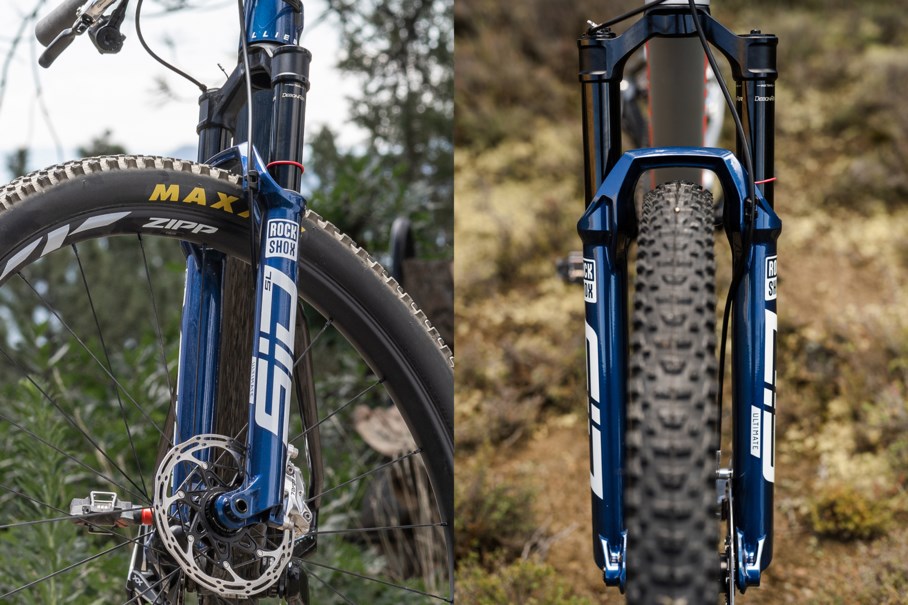
Before we dive into the updates, let’s talk differences between SID and SID SL. You could almost think of these two forks as fraternal twins: born of the same lightweight, cross-country use case, but with enough differences to tell them apart. SID stands for “Superlight Integrated Design,” and SL stands for "Super Light" (so SID SL is Superlight Integrated Design Super Light. Or maybe Superlight2 Integrated Design? Anyway…) SID SL offers up to 100mm and 110mm options, 3P and 2P options, and with 32mm upper tubes, it excels at being the lightest and most efficient fork on the market. SID is a bit more adventurous, with 110mm and 120mm travel options, 3P and 2P options, the bigger, more tunable DebonAir+ air spring, and 35mm upper tubes. SID still focuses on being super lightweight, but offers riders a slightly plusher ride when things get rough, beyond just the 10mm difference in travel. Also ridden to the top step of the XC World Cup podiums, SID aims to feel almost as bottomless as an enduro fork while still being really, really lightweight (and good-looking).
Charger Race Day 2
While attending a few World Cup XCC/XCO races, RockShox Product Manager Jed Douglas grabbed slow-motion video of riders climbing medium-sized obstacles. It became apparent which riders were locked out (the ones deflecting off rocks with little control over their bikes) and which riders were riding in the Open position (the ones absorbing bumps but lacking efficiency). When he captured slo-mo of racers riding in the Pedal position, it validated that the riders maintained control over rocks and roots because the fork absorbed those bumps and could stay on the gas without bobbing.
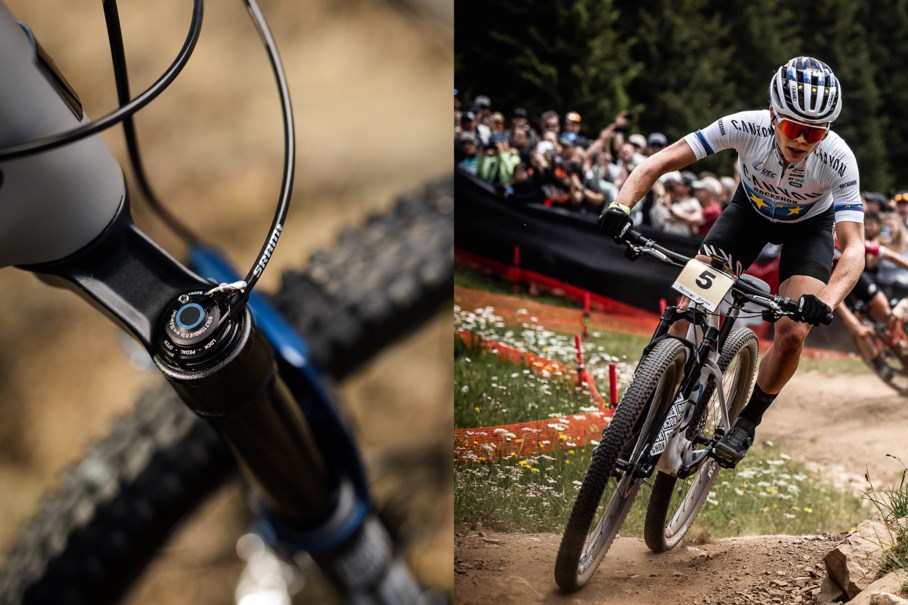
Adding a third damping option wasn’t as simple as modifying the existing damper. They needed to create a new compression valve, making three different oil flow paths so that each position is distinct without cross-talk. Open allows as much oil to pass through the valve as possible, Pedal constrains the oil a bit to create more pressure and damping, and Lock prevents the oil from flowing except in blow-off situations (like an unexpected drop). While making changes to the damper, the team also looked into improving seals within the damper system. Due the smaller 8mm rod and the high lock force, Charger Race Day dampers can see pressures up to 2000 PSI, especially in those blow-off instances (you know, when you forget to unlock your suspension before dropping into the descent). The team knew they wanted to update some of the seals to handle those higher pressures better, so they redesigned the seal head and included new SKF seals, which can take a beating while still maintaining very low friction. Naturally, the team wanted to test this new seal head and lockout design, so they smashed the locked-out dampers in 81 different sample forks at 85 in/second—the force of a simulated drop to flat. The below graph shows that the damper maintained a solid lockout over 50,000 test cycles without degrading.
The thing about all of this, though, is that these changes don’t just apply to the highest-end model of Charger Race Day 2 found in the Ultimate and Select+ models of SID and SID SL; they are found in each damper across the lineup. From Ultimate with the lightest, machined Charger Race Day 2 to the base-model SID with the Rush XC damper, the damping quality is the same.
We want the experience on a SID to be the same across the model range, whether you have the Ultimate or the base model. The difference is in the weight, not the performance.
–Bronson Stagner
Chassis
SID's chassis underwent a lot of updates, too. Sure, they made the SID and SID SL's Ultimate model lighter…again…this time by 70 grams. They machined the crowns to remove any unnecessary material, which looks neat in addition to being functional. But they also made some changes to the bigger SID lineup (not SL) that are not externally apparent. The first one is longer upper tubes, which fully engage the upper and lower bushings. Typically, SID's upper tubes have been kept shorter to keep weight down, as they don't require the large air springs and dampers that their longer-travel siblings require. However, with SID's new, bigger-volume DebonAir+ air spring (more on that later), they needed to extend the spring-side upper tube and the damper side to match. The longer tubes extend further into the lower leg at top out, fully engaging the lower bushings, which wasn’t possible in the past with the shorter uppers. This prevents binding as the upper tubes move into the lowers through the travel, which helps reduce friction by allowing adequate space between the upper tubes and the bushings. We'd be remiss if we didn't mention that with these changes, we also increased bushing overlap to reduce the side load imparted on the bushings, further reducing friction. (Check out the Friction Story for more information on why this matters to your ride experience!).

Speaking of bushings, we had another major update to the process for sizing the bushings. Bushings are installed at the factory and then sized once installed. Narrowing down the ideal size is much more tedious than you might think. The team tested their way through five different bushing-sizing specs and three different chassis designs with differing upper tube lengths to find the perfect combination of clearance between the bushings and upper tubes. This allows the lube to create a slick barrier to prevent friction, but they also needed to make it tight enough that there’s no bushing knock in the fork, even after 10,000 runs. They tested more than 27 samples over 750 hours of simulated riding… which equates to Dan Albert (a 200-lb aggressive-riding RockShox Team Lead) pounding down an enduro track on an XC fork nearly 10,000 times. Despite being a short-travel fork, these chassis (side note, did you know the plural of chassis is also “chassis”?) are ready and willing to take a beating—in fact, it was designed for it.
DebonAir+
Finally, we’ve reached the new DebonAir+ air spring, found in the SID line (to be clear, DebonAir+ is not in the SID SL lineup). SID has been taking on a bit of a different identity than its more race-focused sibling SID SL, blurring the line between true XC-style riding and trail, where lighter weight and aggressive riding collide—almost like a mini-enduro fork. With DebonAir+, Teachout and Stagner wanted to make the air spring fit a wider variety of ride styles, so they focused on making the air spring curve fit what you want as a rider. Now, this may sound like marketing BS, but stay with us.
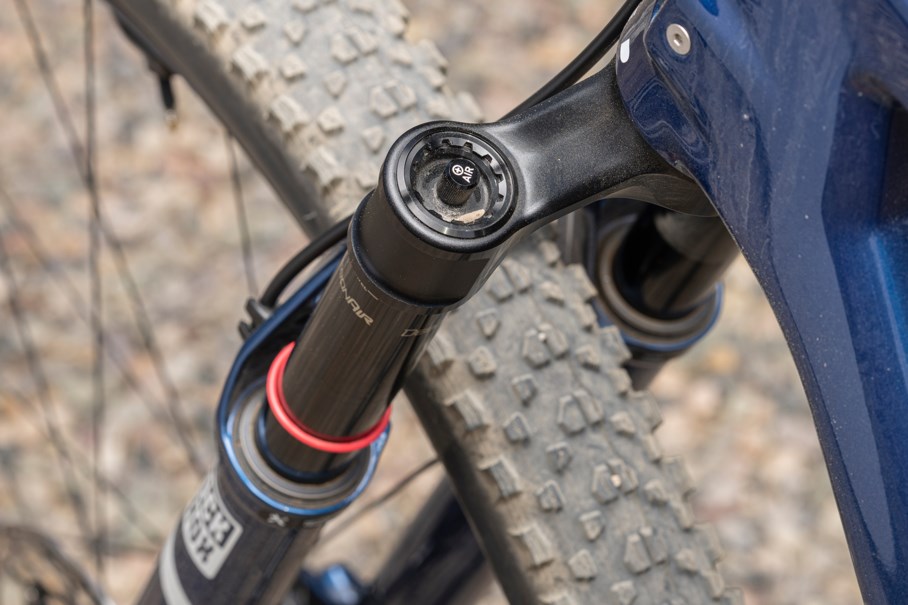
The previous air spring was designed to sit higher in the travel to make it more efficient for XC riders, with a softer mid-stroke feel to help when the fork is moving over obstacles and then ramp up significantly at the end of travel to prevent harsh bottom outs. Whether you dropped air pressure or added it, the spring characteristics would feel the same—a bit more effort to get into the travel, but more efficient. This time around, they wanted to develop an air spring that could behave that way if the rider so desired, but also change how the air spring feels depending on ride style or even per specific trails.
Their goals:
1. Make the air spring feel softer “off the top.” This means getting the fork to compress is easier—it responds readily to input to get the fork moving—as opposed to sitting high in the travel, which takes more effort to compress, but rides more efficiently.
2. Give the air spring more support in the middle of the travel. This means that when you’re riding in the travel (not at top out or bottom out, but in the middle—likely over *something*), the fork feels like it can still hold you up without sinking too deep.
3. Make it easier for the air spring to achieve full travel without ramping too much (unless the rider prefers that, which can be accomplished with Bottomless Tokens).
The first step to achieving their goals was making the air spring bigger. As we mentioned earlier, the air spring and damper have typically been smaller to match SID’s XC roots, and therefore the upper tubes were shorter to keep weight off. If you’ve ever looked up SID’s lower legs, you’d notice the base of each lower leg is recessed. By dropping the bottom of the spring-side lower leg, the team was able to grow the air spring total volume by 16%. Since their first goal was to soften initial travel, they could now increase the negative air spring chamber by 50%, drastically impacting how the air spring responds off the top of travel and providing more support in the middle of travel (goal number two). They also increased the positive chamber by 16%, which helped them hit their third goal of making it easier for the air spring to achieve full travel. (Check out DebonAir+ for some basic air spring theory on what positive and negative air chambers do.)
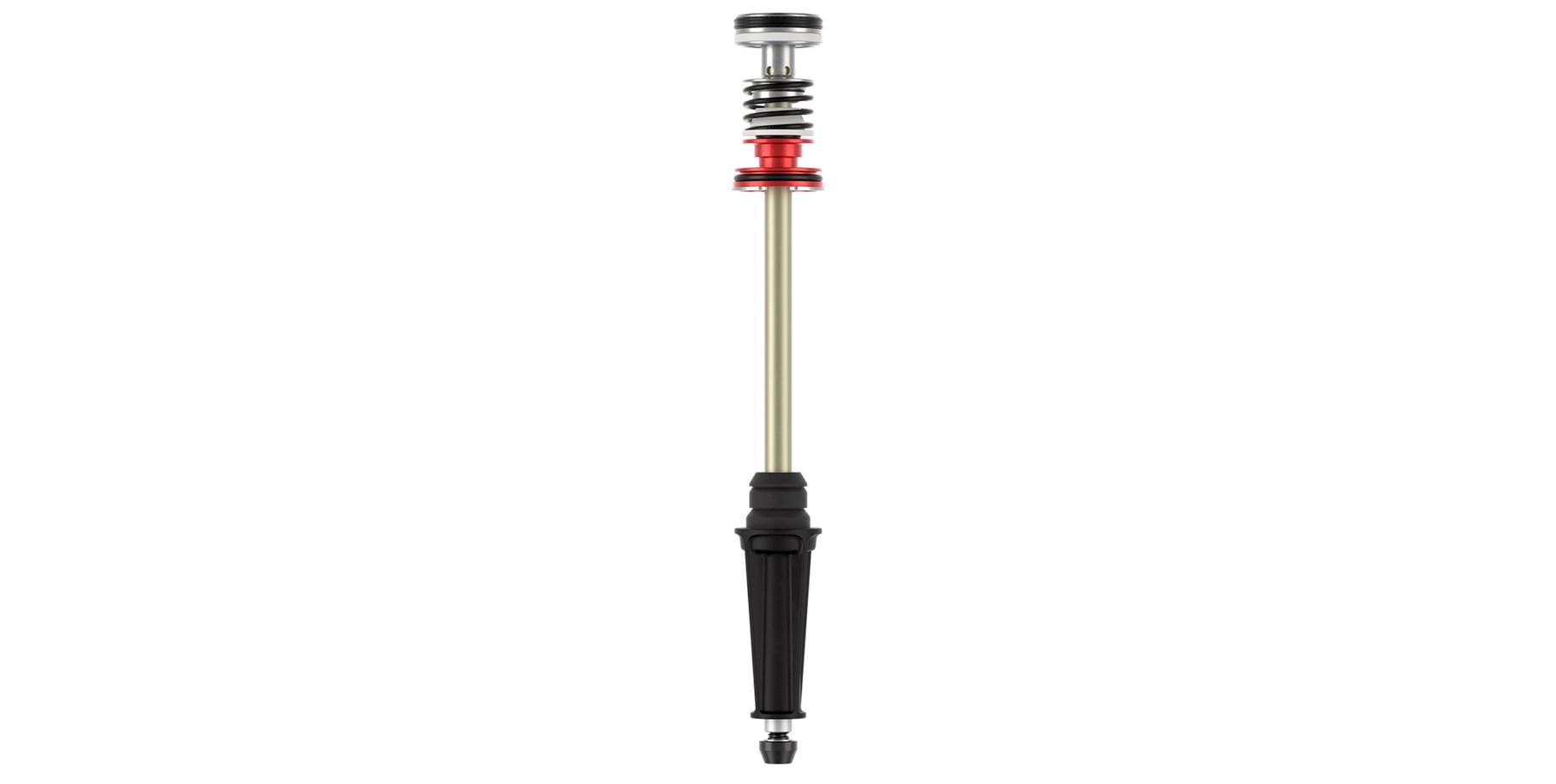
Another significant change they made for softer initial travel was tossing out the rubber Top Out Bumper and replacing it with a coil spring. Teachout explains: “In those situations where you’re encountering a lot of small bumps in quick succession, you can get a lot of harshness from bouncing along top out, as rubber tends to have more hysteresis. The idea behind the coil spring is that it has less speed sensitivity and responds faster than rubber can, reducing harshness and increasing traction while riding at the top of travel."
Let's revisit the whole changing-the-spring-curve-and-therefore-ride-feel bit. The team accomplished their goals outlined above, which affected the spring curve. The air spring is softer in the initial travel, stays higher and more supportive through the middle of the curve, and is still progressive near the end of the stroke, while full travel is easier to reach. Bump up the air pressure if you'd prefer the fork to continue to sit tall through the travel and ramp quickly at bottom-out. We're not talking about a few PSI, but more like 10 PSI increments. Or drop the pressure—again, a lot—it'll soften the spring, giving it the more supple and bottomless feeling you'd experience on a longer-travel fork. Or, if you like the air spring softer but want more efficiency, the Pedal and Lock positions can be handy. You have options, and we encourage you to play.
Since the new spring curve is initially flat when you change pressure, you're changing that beginning rate which offers a better ride experience. You drop the pressure, and the whole feel of the air spring has changed—you can ride deeper in the stroke now. Or add pressure and stay up higher in the travel without any harshness.
–Bronson Stagner
Ride Feel – Validation
While the new, redesigned 3P and 2P dampers, updated chassis, and new DebonAir+ air spring are all the ‘sexy’ updates for SID, there were also a lot of minor tweaks, trial and error, and iterations the team worked through on all aspects of the fork that led to SID’s long-lasting performance, durability, and, most importantly, its elevated ride feel. Before 2024 SID and SID SL launched to the masses, it accumulated more than seven XCO and XCC World Cup wins and made it to the second and third spots on the podium 12 times.
Two big improvements have been implemented in SID: the fork got smoother and lighter at the same time. The downhill and the uphill performance both improved which is exactly what you want as a rider but rarely come together.
–Luca Schwarzbauer, Canyon CLLCTV XC
2024 SID and SID SL forks come in four different models, starting with the lightest-weight Ultimate model, Select+, Select, and base-model, and they are all offered with either three-position (3P) or two-position (2P) damping. Check out the FAQ page for updates, fitment, or other questions.
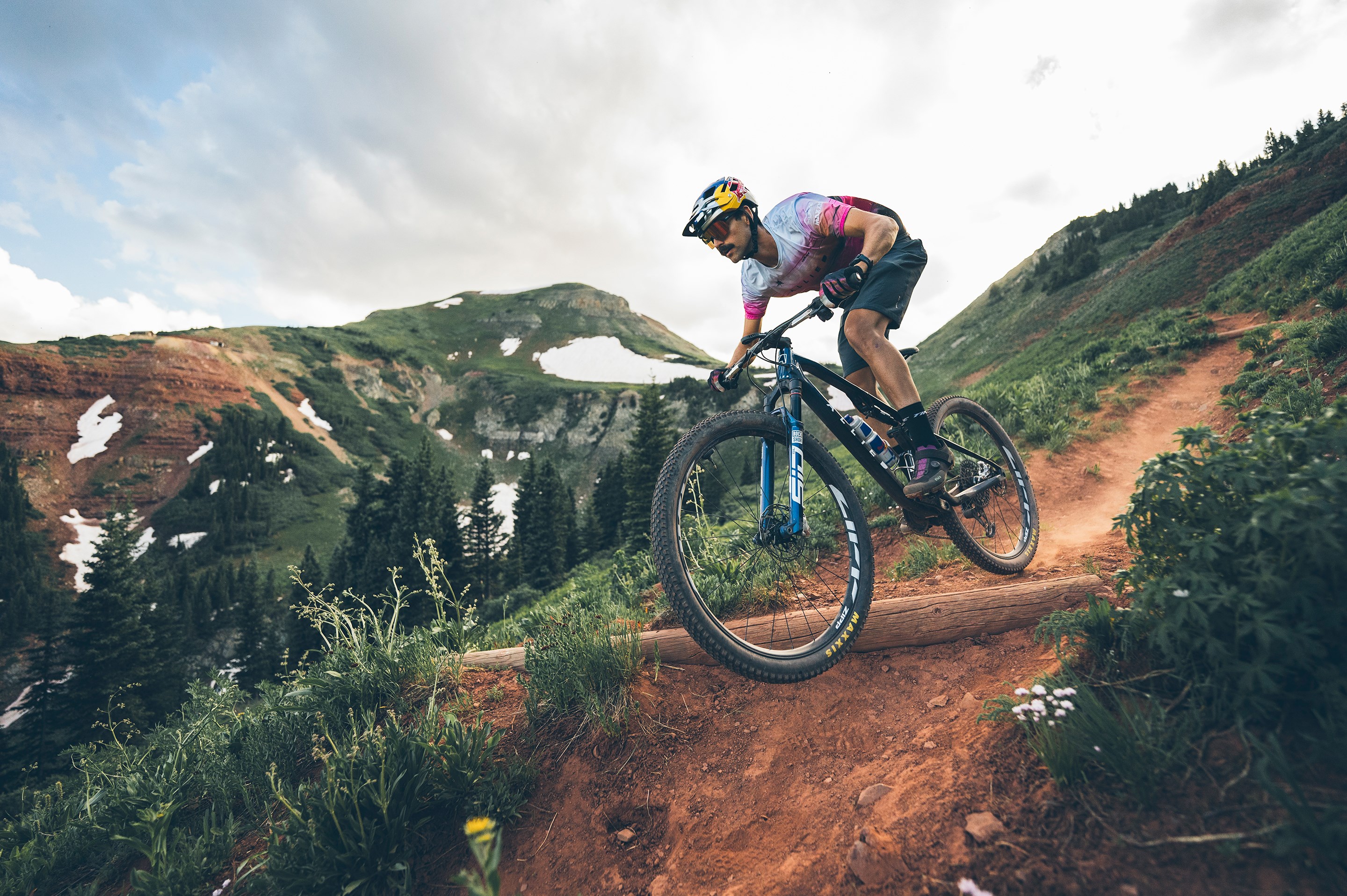
Photos by Callum Wood and Anthony Smith. Words by Sarah Walter.